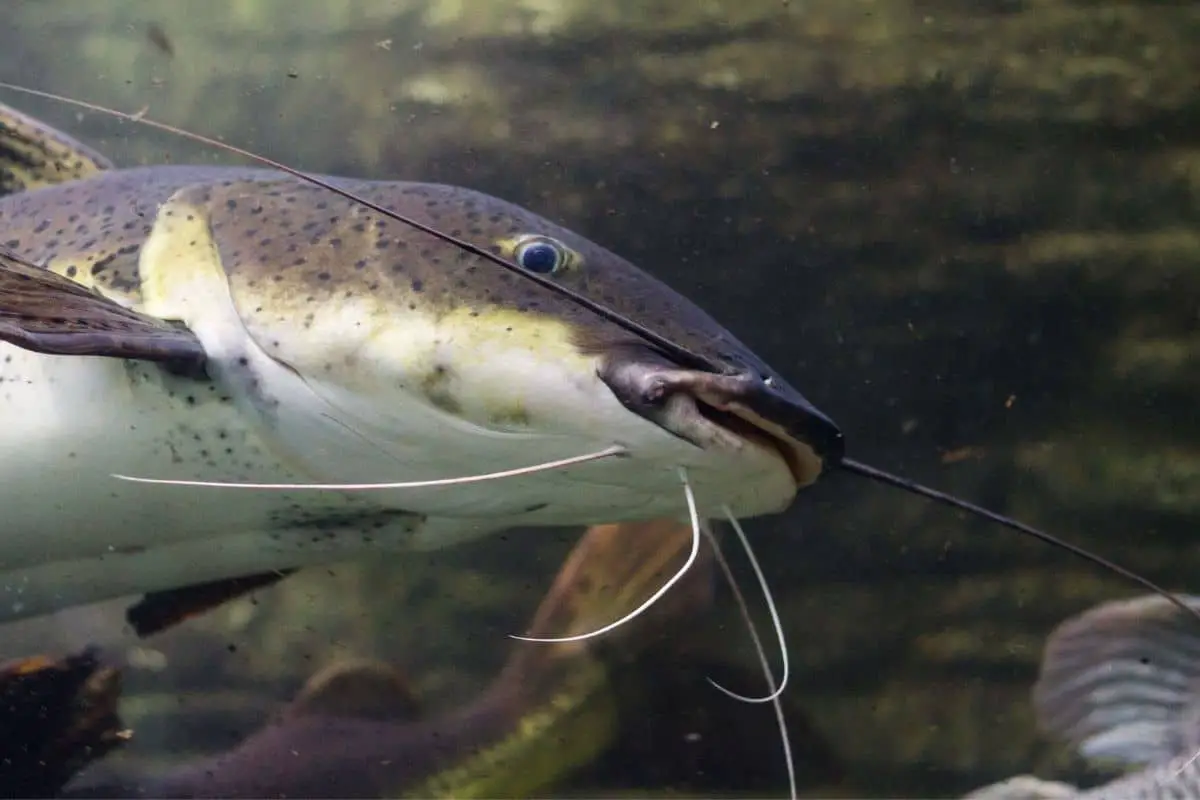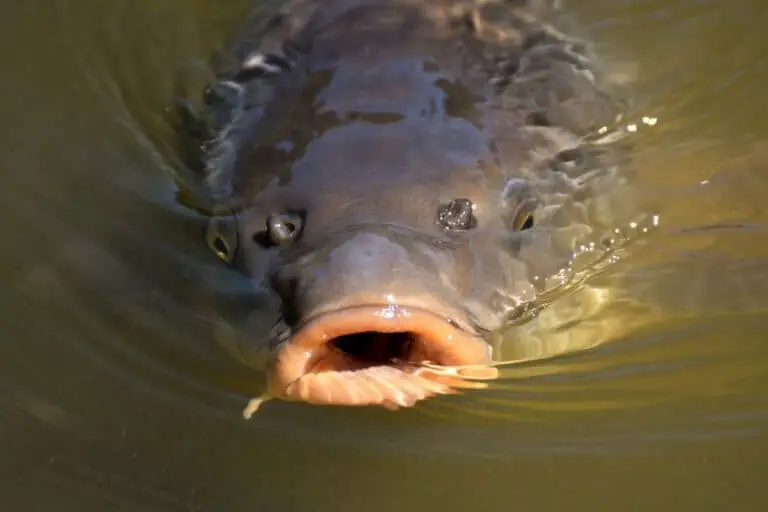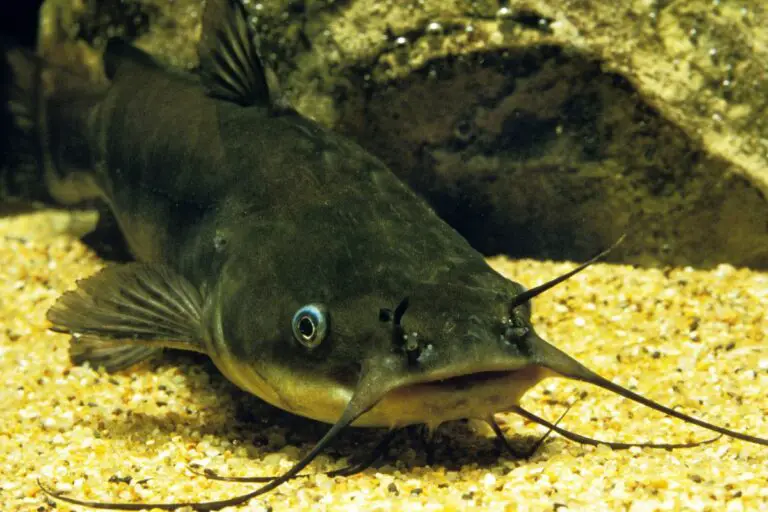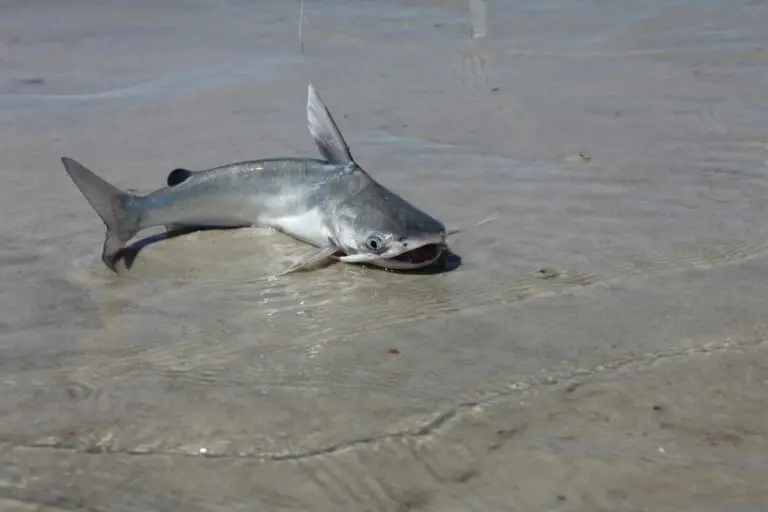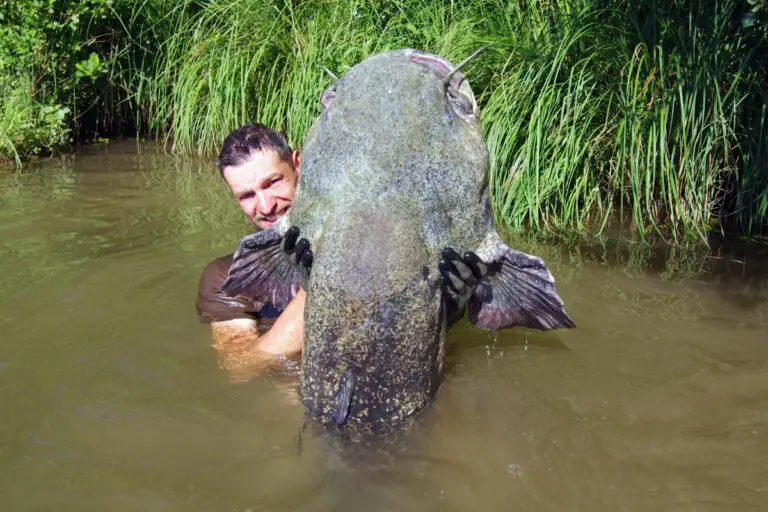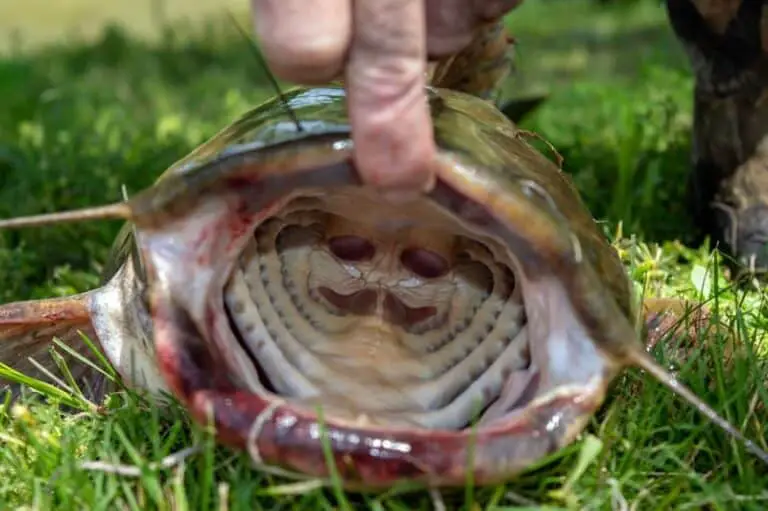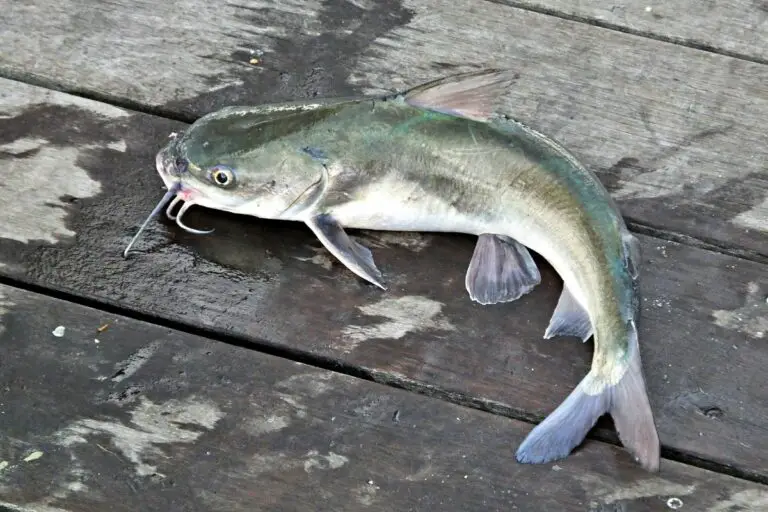Are Catfish Dangerous to Touch? How to Hold Catfish Safely
Catfish are not aggressive species; they will mostly mind their own business. However, it would be best if you were very careful when handling catfish because when they feel threatened, they are known to release painful venom to defend themselves.
So, are catfish dangerous to touch? Catfish are dangerous to touch. If you’re not careful, the sharp spines on their dorsal and pectoral fins can accidentally puncture your skin and cause severe pain because they contain a kind of venom unique to catfish species.
Keep reading to learn more about why catfish venom is dangerous and what to do if you get stung by a catfish.
If you are fishing for catfish anytime soon, you should also check out my guides to the best catfish reels and rods here. These upgrades can make a huge difference on your next fishing trip.
Table of Contents
What Makes Catfish Dangerous?

To understand what makes catfish dangerous, you need to learn some facts about their anatomy.
Catfish have whiskers coming out of the area around their mouth. They also have spines in the dorsal and pectoral fins located behind their heads on each side and on the top of their head.
The catfish whiskers are not really dangerous. Touching them is a lot similar to touching the whiskers on a dog, as they’re soft and pliable. So, there’s definitely no need to worry about being stung or getting hurt by them.
The main concern is the spines because their tips are pointed and sharp, especially on smaller catfish. It can be very dangerous if these spines break your skin as they contain painful venom.
Research shows that at least 1,250 species are venomous, and most of them use their venom as a defense mechanism against their enemies.
Do Catfish Really Sting?
Catfish do not really sting. Their fins can be soft if you touch them from the back. However, if one of the spines located on their fins punctures your skin, you’ll be exposed to their venom, which is as painful as an actual string.
How Painful Is a Catfish Sting?
The venom contained in catfish spines is known to cause a lot of pain. It can cause swelling along with a rapid increase of blood flow in the area of the injury.
So, if a catfish spine punctures your skin, it’s important to contact emergency services to avoid risking any infections or severe blood loss.
How to Hold a Catfish and Not Get Stung?
Catfish do not have scales like the majority of other fish species. So, holding them can be difficult for inexperienced anglers because they are slippery.
The sharp spines contained in their dorsal and pectoral fins can make it significantly harder to hold without getting stung or injured.
So, you need to be very careful, particularly when holding smaller catfish, because their spines are sharper. As the fish get bigger in size, their spines will become much duller, and the chances of getting stung by them will be a lot less.
The most important thing you need to do is wear protective gloves before putting your hand anywhere near the catfish.
I recommend the gloves from BIG WORM FISHING. They are super affordable, and for the price, there really aren’t any better-made gloves out there.

Now, let’s take a look at how you can properly hold catfish of different sizes without getting stung.
| Small Catfish | Medium Catfish | Big Catfish |
|---|---|---|
| The best method to hold small catfish would be to grab the fish from the top and keep your hand positioned directly behind the spines in their pectoral and dorsal fins. | Fish with sizes from one to two pounds up to seven or eight pounds can usually be handled in the same method as small fish. | Getting stung when holding a big catfish is rarely a concern because their spines are much duller than smaller catfish. |
| Make sure to have the area between your thumb and forefinger resting behind the dorsal fin. | However, they might be heavier, so it’s recommended to position your other hand on the tail section for more support. Using both hands will also allow you more control over the catfish if they begin to thrash around. | The best method to hold them would be by scooping them up with a dip net and using lip grips to handle them during landing. |
| This method is ideal with fish that are small enough so you’re able to get your entire hand around them and keep a firm grip. As the fish grow bigger, this method might become much more difficult. | This method only works with medium-sized fish that you can easily get your hand around. If the fish get too big, the best method for handling them would be using a lip grip tool. | However, it’s still important to be careful if you stick your hand in their mouth because their teeth can be much more dangerous than their fins. |
Here is a simple 2-minute video that shows how to hold a catfish safely without getting spined:
Interestingly enough, despite being an inherently risky fish to touch, some people catch them by hand as a sport!
This insane sport is called Catfish Noodling, and it’s as interesting as you think it is, and you can learn more about Catfish Noodling (and competitions!) here.
What to Do If You Get Stung by A Catfish?

If you get stung by a catfish, you first need to head to shore because a catfish sting may cause nausea or make you feel lightheaded. You need to rinse the wound with fresh water and cover it with clean bandages.
Keep it firmly wrapped until it heals, and make sure to look out for any signs of infection. If you notice any swelling or tenderness around the area of the injury, it’s recommended to seek medical attention.
Here are some other tips you can follow to prevent infection and reduce the pain of the sting:
- If you notice that parts of the spines that punctured your skin broke off and remained in the wound, make sure to remove them all using tweezers, as they could cause an infection.
- Clean out the wound using hydrogen peroxide if you are worried about any bacteria that might have gotten in.
- Avoid using ice on the wound because the cold temperature will only make the toxins more powerful and the pain much worse.
- immerse the wound injury in hot water (as hot as you can tolerate). Within half an hour, reduce the pain. Hot water will also help flush out poison and germs from the wound.
Outdoorskilled’s Recommended Gear for Superb Catfishing
I’ve testeI’vezens of reels, rods, and lines for Catfishing, and after years of testing, here are my quick picks that will definitely improve your current setup and results!
My recommended reel is the Abu Garcia Ambassadeur Reel C3-7000 which is ideally suited for catfish.

The rod I always recommend is the KastKing Perigee II Fishing Rod. It’s lightIt’sht, durable, and affordable. Furthermore, you’d haveyou’dde selection of models to choose from, whether you’re looyou’reor a spinning or casting rod. Lastly, it comes in twin-tips models, which means you’ll be you’llg two rods rather than one.

What I use is the Berkley Trilene Big Game Monofilament Fishing Line as it’s the sit’sgest, toughest mono I’ve ever I’veed and because it has exceptional shock strength, great knot integrity, tremendous abrasion resistance, and a high-visibility color option, you really can’t findcan’ter options

Related Questions
How to Safely Release Catfish Back Into the Water?
To safely release catfish back into the water, you need to lower it as close to the water’s surface as possible, then loosen your grip. Do not try to toss the catfish in the water; instead, let it slip out so it can swim away on its own. Ensure to keep your fingers behind the spines and not let your hand brush along the fish’s back.
What Are the Largest Catfish Species?
The three largest species of catfish are the Mekong giant catfish, the Piraiba catfish, and the Wels catfish. These catfish species can typically grow to reach nearly 700 pounds in weight. The size and weight of a catfish generally depend on the species and environment they can be found in.
What Safety Measures Can You Take When Handling Catfish?
The safety measures you can take when handling catfish include wearing gloves to protect your hands from the sharp catfish spines. Ensure to bring basic first aid supplies and an antiseptic to treat any stings or bites caused. You can also get a lip grip tool that will allow you to safely lift the fish by the lip so you can handle it without directly using your hands.
Helpful Resources
Fishing for Catfish: The Complete Guide for Catching Big Channells, Blues and Flatheads
A Beginner’s Guide to Catfish Fishing
Resources for Catching Catfish Faster and More Easily
- Upgrade your gear with the best Catfish Rods here and the best Catfish Reels here
- You should also check out these perfect catfish rod and reel combinations here.
- Take your catfishing skills to the next level by checking this guide to catching Catfish
If you like this article, please share it or pin it, you can find the share buttons below. We will really appreciate it ❤️

